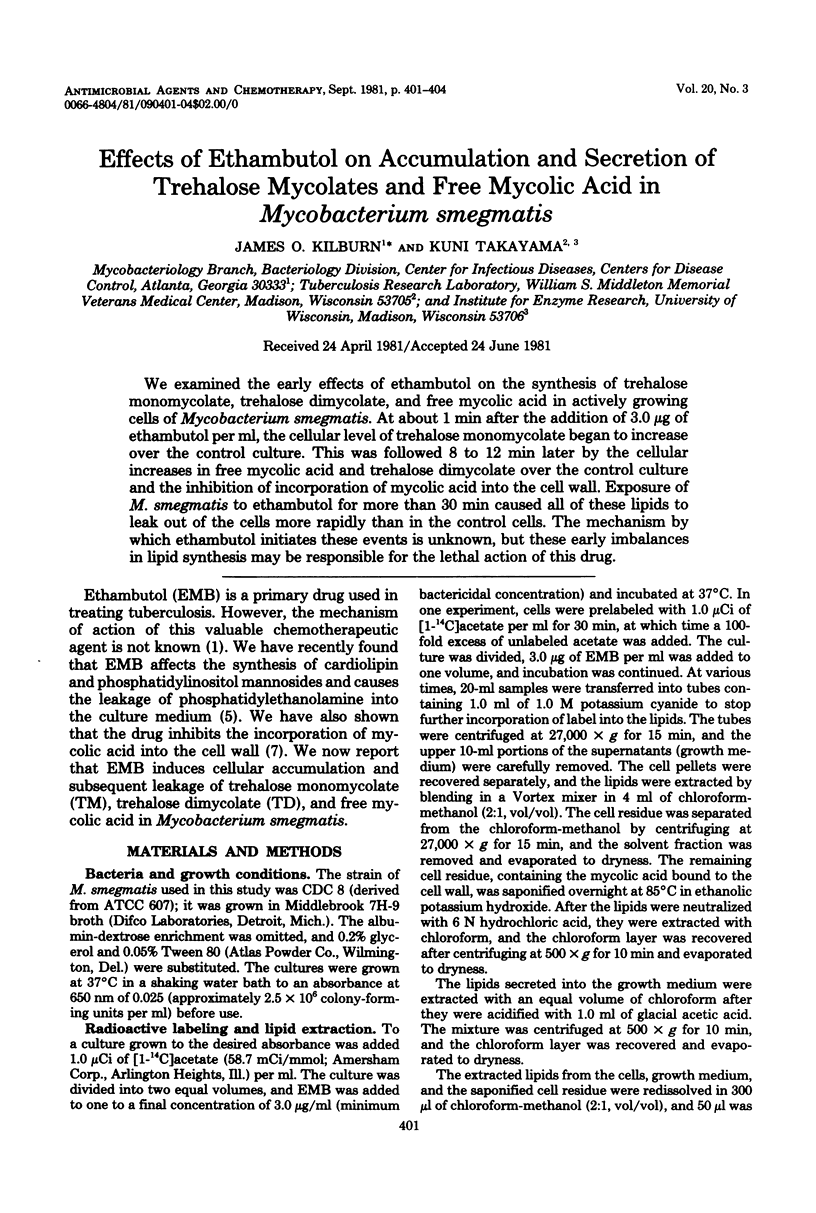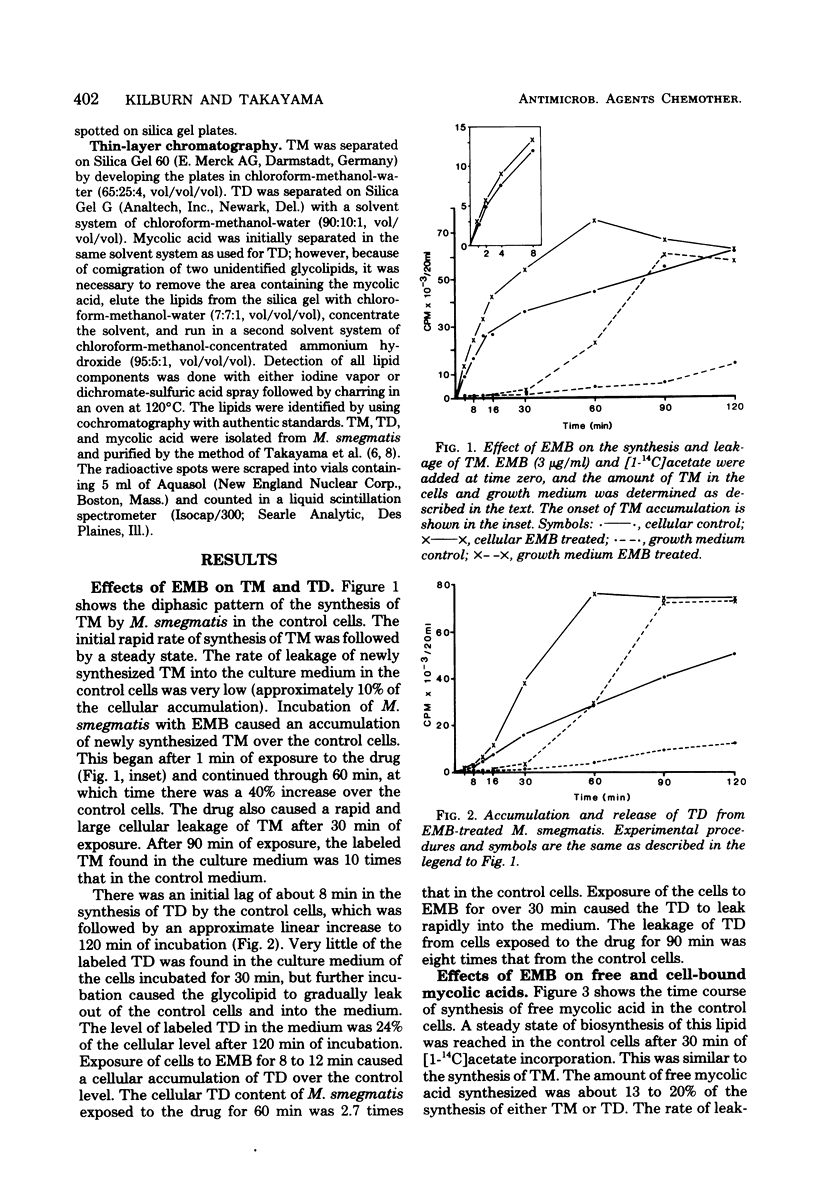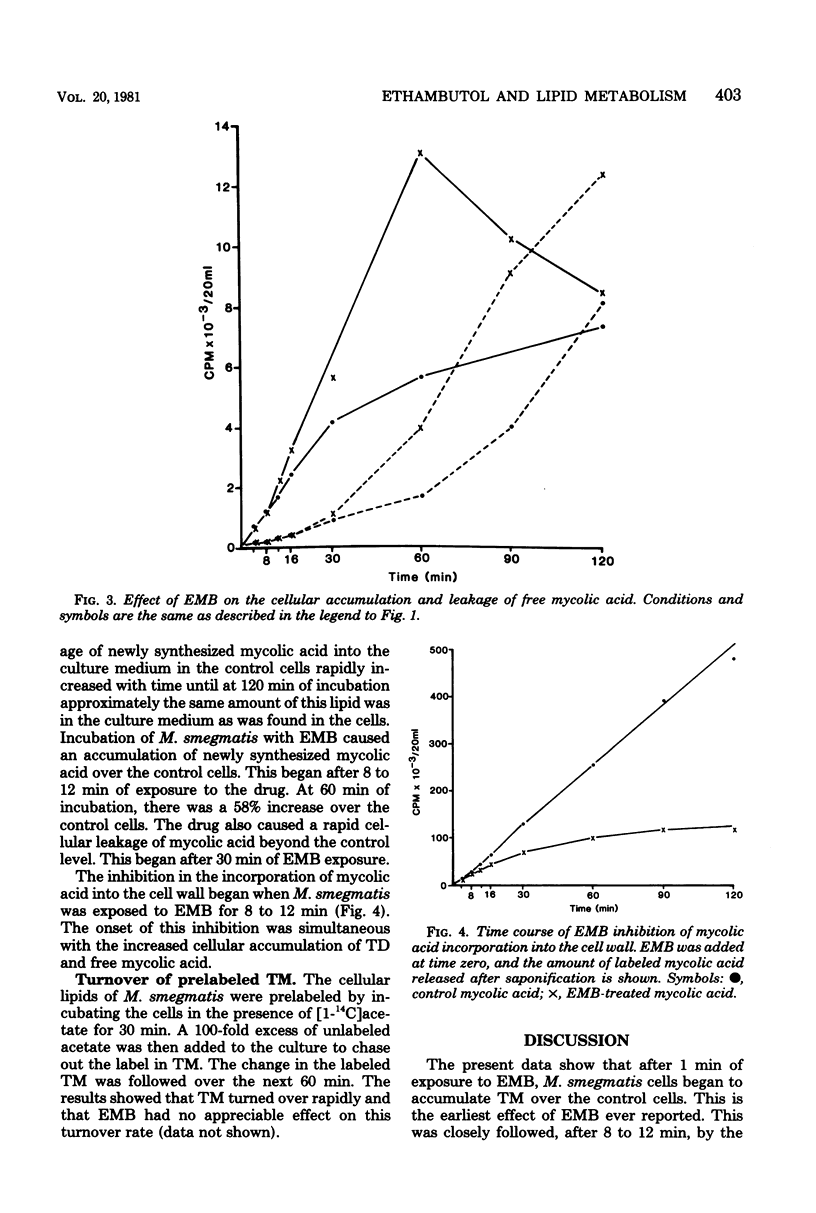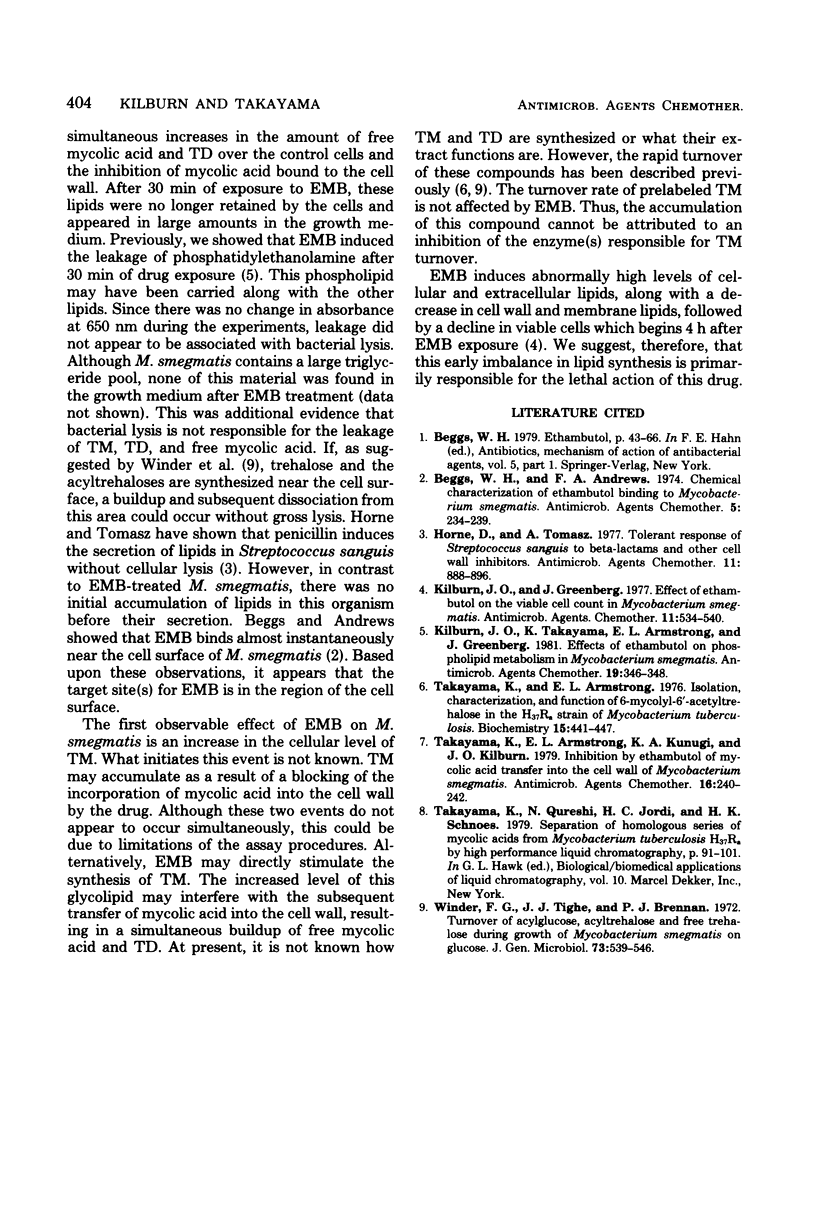Abstract
We examined the early effects of ethambutol on the synthesis of trehalose monomycolate, trehalose dimycolate, and free mycolic acid in actively growing cells of Mycobacterium smegmatis. At about 1 min after the addition of 3.0 micrograms of ethambutol per ml, the cellular level of trehalose monomycolate began to increase over the control culture. This was followed 8 to 12 min later by the cellular increases in free mycolic acid and trehalose dimycolate over the control culture and the inhibition of incorporation of mycolic acid into the cell wall. Exposure of M. smegmatis to ethambutol for more than 30 min caused all of these lipids to leak out of the cells more rapidly than in the control cells. The mechanism by which ethambutol initiates these events is unknown, but these early imbalances in lipid synthesis may be responsible for the lethal action of this drug.
Full text
PDF



Selected References
These references are in PubMed. This may not be the complete list of references from this article.
- Beggs W. H., Andrews F. A. Chemical characterization of ethambutol binding to Mycobacterium smegmatis. Antimicrob Agents Chemother. 1974 Mar;5(3):234–239. doi: 10.1128/aac.5.3.234. [DOI] [PMC free article] [PubMed] [Google Scholar]
- Horne D., Tomasz A. Tolerant response of Streptococcus sanguis to beta-lactams and other cell wall inhibitors. Antimicrob Agents Chemother. 1977 May;11(5):888–896. doi: 10.1128/aac.11.5.888. [DOI] [PMC free article] [PubMed] [Google Scholar]
- Kilburn J. O., Greenberg J. Effect of ethambutol on the viable cell count in Mycobacterium smegmatis. Antimicrob Agents Chemother. 1977 Mar;11(3):534–540. doi: 10.1128/aac.11.3.534. [DOI] [PMC free article] [PubMed] [Google Scholar]
- Kilburn J. O., Takayama K., Armstrong E. L., Greenberg J. Effects of ethambutol on phospholipid metabolism in Mycobacterium smegmatis. Antimicrob Agents Chemother. 1981 Feb;19(2):346–348. doi: 10.1128/aac.19.2.346. [DOI] [PMC free article] [PubMed] [Google Scholar]
- Takayama K., Armstrong E. L. Isolation, characterization, and function of 6-mycolyl-6'-acetyltrehalose in the H37Ra strain of Myocobacterium tuberculosis. Biochemistry. 1976 Jan 27;15(2):441–447. doi: 10.1021/bi00647a032. [DOI] [PubMed] [Google Scholar]
- Takayama K., Armstrong E. L., Kunugi K. A., Kilburn J. O. Inhibition by ethambutol of mycolic acid transfer into the cell wall of Mycobacterium smegmatis. Antimicrob Agents Chemother. 1979 Aug;16(2):240–242. doi: 10.1128/aac.16.2.240. [DOI] [PMC free article] [PubMed] [Google Scholar]
- Winder F. G., Tighe J. J., Brennan P. J. Turnover of acylglucose, acyltrehalose and free trehalose during growth of Mycobacterium smegmatis on glucose. J Gen Microbiol. 1972 Dec;73(3):539–546. doi: 10.1099/00221287-73-3-539. [DOI] [PubMed] [Google Scholar]


